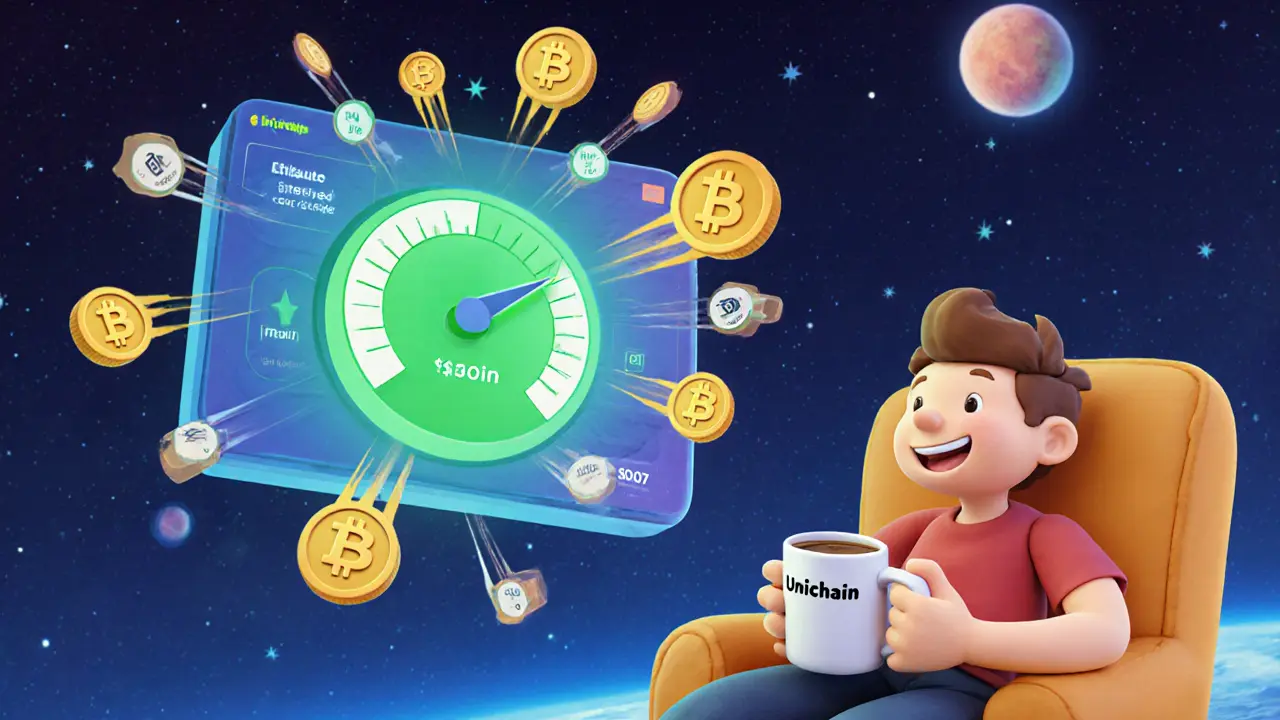Uniswap Layer-2: What It Is, Why It Matters, and What You Need to Know
When you trade crypto on Uniswap Layer-2, a scaled version of the Uniswap decentralized exchange built on Ethereum’s second-layer networks. Also known as Uniswap V3 on Layer-2, it lets you swap tokens with near-zero fees and instant confirmation—something the original Ethereum chain can’t do reliably. This isn’t just a tweak. It’s a full rewrite of how DeFi works for everyday users.
Uniswap Layer-2 isn’t one single thing—it’s a family of solutions. Projects like Arbitrum, a Layer-2 scaling network that uses optimistic rollups to process transactions off-chain and Optimism, another major Ethereum Layer-2 built on optimistic rollups with strong developer adoption host their own versions of Uniswap. These networks bundle hundreds of trades into one single transaction on Ethereum, slashing costs and speeding things up. You still get the same security as Ethereum, but without the $50 gas fees during peak hours. That’s why over 70% of Uniswap’s daily volume now happens on Layer-2, not the main chain.
But Layer-2 isn’t just about saving money. It unlocks real use cases. Think of yield farming on StellaSwap v3, a DeFi exchange built for Polkadot-Moonbeam with concentrated liquidity—it’s fast, but limited. Uniswap Layer-2 works across chains and supports massive liquidity pools. You can trade ETH for USDC, stake in a liquidity pool, earn rewards, and withdraw—all in under a minute and for pennies. That’s why wallets like MetaMask now auto-detect Layer-2 networks and switch over silently. You don’t need to be a tech expert to benefit.
Still, not all Layer-2s are equal. Some are centralized in practice. Others have long withdrawal times. Uniswap Layer-2 on Arbitrum and Optimism stands out because it’s open-source, community-governed, and backed by the same team behind the original Uniswap. It’s not a gamble—it’s infrastructure. And with Ethereum’s base layer still struggling under load, Layer-2 is the only scalable path forward.
What you’ll find below are real reviews of exchanges and protocols that live on or connect to Uniswap Layer-2. Some are built on it. Others compete with it. A few are outright scams pretending to be part of it. You’ll see how STON.fi works on TON, why Blockfinex is risky, and how Kalata Protocol’s high yields hide dangerous flaws. None of these are random. They’re all part of the same ecosystem—some thriving, some collapsing. You need to know the difference.
Uniswap v2 on Unichain: A Real-World Review of Speed, Cost, and Usability
Uniswap v2 on Unichain offers 95% lower fees and sub-second trade speeds, making it the fastest and most cost-effective way to trade crypto. Learn how it works, why it's safer, and who should switch now.
